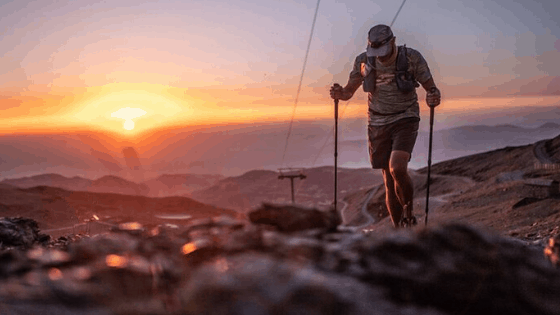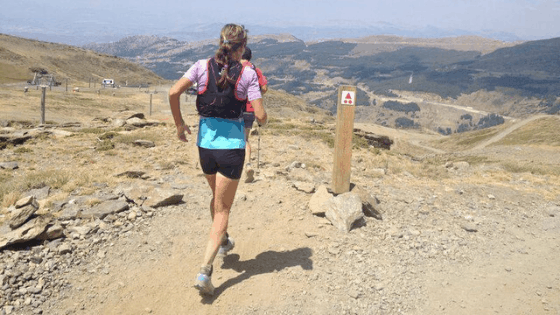
If you have ever done any running at altitude you will know how much of a grim experience it can be.
Having trained at altitude I can say that there is no way that I would willingly put myself through that kind of misery if there was no measurable performance benefit at the end of it.
What Is Altitude Training
Altitude training is when you live and train above 4.950 feet (1.500 m) for an extended period of time, triggering the production of the hormone EPO which is what creates more red blood cells. Red blood cells carry oxygen to your muscles. Having more of them makes you run faster for longer.
I know that the mere mention of EPO may cause alarm for many runners, especially as it is what often brings endurance sport to the attention of mainstream media. The truth is that it is a naturally occurring hormone and having it in our system is completely normal and healthy.
How Does Altitude Make Sea Level Running Easier
When you have extra red blood cells thanks to your body making them as a coping mechanism to the altitude, you keep those red blood cells when you move back to sea level.
More red blood cells at sea level means that your blood can absorb and carry more oxygen from each breath you take.
More oxygen delivered to your muscles means that you can not only run faster but keep going at that higher speed for longer.
What Altitude Do You Need For Benefits
The altitude range at which you can gain benefits go from 4.950ft (1500m) to 10.000ft (3000m).
Our bodies all cope with Altitude in different ways. It is important to be at the altitude where you can still train properly.
For instance, many western athletes struggle to do any decent training when they go to the altitude training camp in Iten, Kenya, located at just under 8.000ft (2400m).
Kenya’s elite runners stay at the Iten training center all year round and normally travel down to races the day before the event.
Does Higher Equal Better
If training at altitude gives you performance benefits, then it would seem logical that the higher the altitude, the greater the benefit.
Unfortunately, this is not the case. As your altitude increases, the level at which you are able to train will decrease.
If you keep moving to higher and higher altitudes you will reach the point where you won’t be able to do any training at all.
How Long Should You Stay At Altitude
There is no maximum period for staying at altitude.
However, your first week at altitude will be a struggle to keep any training intensity. Your second week will be making up for the intensity you lost during the first week. It is during the third week that you will begin to gain decent performance advantages.
That is why the suggested minimum time for an altitude training camp is three weeks.
How Long After Altitude Do You Feel The Benefits
This will vary a lot from athlete to athlete. That “window of benefit” can last anywhere from three weeks to three months.
As you come down from altitude you have an initial window of benefit that lasts between 48 and 72 hours. After that you hit what I call an Oxygen hangover because it feels like a mild hangover that just lingers for about ten days.

So if you do go to an altitude training camp, just don’t plan any races for during that Oxygen hangover or your results will be worse than they would have been if you never went to altitude.
The factor that will determine how long your benefit will last is your haematocrit level. When you come back down from altitude you will lose between 1% and 2% of your haematocrit level per week until you equalize at what is normal for your at sea level.
What To Expect At Your First Altitude Training
The first thing that you will notice during your first training run at altitude is that you will become out of breath very quickly.
The next thing that you will notice is how your heart rate will spike up very quickly and battle to come down again.
Can You Do Your Normal Training At Altitude
During your first week or two at altitude, you will not be able to train at your normal intensity, simply because you will be gasping for breath and have a racing heart rate.
Train Low, Sleep High
One way that some athletes try to compensate for this is set their training camp at a high altitude and then move to a lower altitude daily for their training sessions. That way they can maintain training intensity and still get some of the altitude benefits. This is where the expression “sleep high, train low” comes from.
Is There A Special Altitude Diet
When it comes to spending time at your altitude training camp, the factor that will help you to adapt more quickly will be the rate at which you can produce red blood cells.
In order to help you to produce red blood cells more quickly it will help if your altitude nutrition includes foods that are rich in iron.
What About Altitude Tents
An alternative for when you are not able to stay at high altitude is to sleep in an altitude tent.
The way an altitude tent works is that it fits over your bed and slowly pumps nitrogen in through an inlet. This makes the air in the tent more nitrogen rich, displacing the oxygen which mimics what air at altitude is like.
The trouble is that in order to trigger your body into creating the EPO you need for extra red blood cells you need to be at altitude for an unbroken period of at least 12 hours each day.
That means you will be confined to the tent and therefore have to stay in bed for more than 12 hours every day. Getting up to drink, eat, or go to the bathroom will negate the whole altitude session for that day.
As you can see, altitude tents are not a particularly effective way of simulating what staying at a high altitude training camp will be like. Plus they are quite expensive.
Where I have seen altitude tents being effective is when an athlete has spent months training at altitude and then just sleeps in the tent when they come down to sea level for a block of racing. That way they are able to prolong their altitude training camp benefits.
Altitude Masks
Masks became a big talking point in society during the Spring/Summer of 2020. That was when many countries made it compulsory to run while wearing a mask and suddenly millions of runners got to experience what wearing an altitude mask feels like.
The truth is that they feel awful.
While masks do mimic the lack of oxygen associated with altitude that is where the similarity ends. At altitude the lack of oxygen is balanced by extra nitrogen, while with a mask you are breathing your newly exhaled carbon-dioxide.

When you train at altitude, even though the air will have less oxygen, that oxygen level stays constant.
Conversely, with a mask, your available oxygen reduces with each breath.
This is the equivalent of drastically increasing your altitude with each step you take. Mountaineers limit their daily altitude increase in order to prevent the onset of altitude sickness. The simulated altitude increase caused by masks is significantly more than the mountaineering limit.
So it is no surprise to read about runners becoming dizzy or even passing out when running with a mask on. There have even been some documented instances of mask-induced altitude sickness.

One thought on “How Altitude Training Makes You Faster”
Comments are closed.